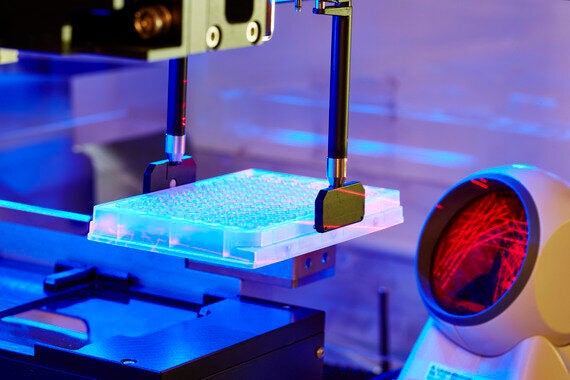Yesterday Anthony Nolan facilitated three stem cell transplants, taking healthy cells from donors and giving them to patients with blood cancer and blood disorders. Today we're doing the same thing. In fact, we give three people a second chance at life every single day.
Stem cell transplants are amazing because they can cure life-threatening illnesses, but the transplant is only the first step of the journey to recovery. There's still more we can do to increase the success rate of transplants, and reduce the number of people who experience post-transplant complications so that they can have the best possible quality of life.
At Anthony Nolan we are investing in research into new techniques and treatments which will improve outcomes for transplant recipients.
This research is desperately needed because success rates for transplants are still too low. Less than half (44%) of people who have a transplant for leukaemia survive for more than five years. For other blood disorders the number is slightly higher, but still only fifty per cent.

A stem cell transplant, even though it could be someone's best shot at survival, is a serious medical procedure that can take its toll on the body. The chemotherapy that a patient goes through to prepare for transplant kills off their immune system, making them vulnerable to infection; sadly, on rare occasions a patient's cancer can return even after a transplant.
Our researchers are carrying out a number of projects to improve these outcomes. We know that a successful transplant needs the donor and patient to have matching tissue types, but what other genetic factors play a role? By analysing the outcomes of more than 2,500 transplants from the last forty years, we hope to find an answer.
We're also doing more to minimise post-transplant complications such as graft versus host disease (GvHD), where donor cells attack the patient's body and can result in liver, skin or gut problems. While a small amount of GvHD is good, as it shows the donor cells are working, these complications can be serious, and in some cases life-threatening. To combat this, we're exploring the use of special regulatory T cells, a type of white blood cell, to damp down the overactive immune response that causes GvHD.
Through our research Anthony Nolan aims to improve survival rates for adults receiving a transplant for leukaemia from 44% to 55%, and for other blood disorders from 50% to 60%. We also want to halve the number of people who suffer post-transplant complications, enabling them to make a fuller, faster recovery. What's more, we want to do all this by 2025.
These aren't easy wins, but with the help of our world-leading research staff, generous supporters and, of course, wonderful stem cell donors, we believe we can not only keep saving lives but also give people full and healthy lives far into the future.
Read our research strategy in full here.
And if you're aged 16-30, why not find out more about becoming a stem cell donor at www.anthonynolan.org
